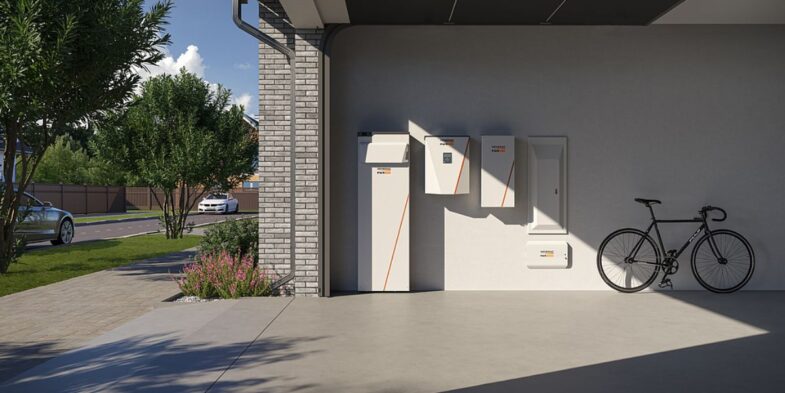Whether you already own an EV or plan to buy one soon, understanding the necessary steps for a smooth installation can save time, money, and hassle. As electric vehicles (EVs) become more popular, the need for convenient and efficient home charging solutions is rising. Preparing your home for an EV charging station isn’t just about buying the equipment—it’s about ensuring your home can support it safely and efficiently.
If you’re also considering power backup systems alongside EV charging, Pacede is a trusted name offering comprehensive energy solutions. Known as a reliable electric vehicle charging point installation, they are not only provides EV charging assistance but also specializes in backup power setups. Whether you’re searching for electric charger home installation or planning for a future-proof electric lifestyle, Pacede ensures your energy needs are fully covered. Let’s discuss key considerations of how to prepare your home for electric vehicle charging installation.
Assess Your Electrical System:
First analyze the existing electrical system of your home before further steps. Level 2 EV chargers need both a 240-volt outlet together with a dedicated circuit that could be unavailable in older homes. The assessment of electrical panel capacity requires a licensed electrician to perform the verification. Ask for professional advice before starting the upgrade work because property electrical systems that are old or overloaded require additional attention. Early evaluation of electrical systems allows you to prevent surprises that delay your charging infrastructure construction.
Choose the Right Charging Level:
A person can purchase EV chargers at either Level 1 or Level 2 specifications. Level 1 operates with basic 120-volt outlets but charges the battery very slowly for complete recharge durations exceeding 24 hours. Level 2 charging stations deliver both faster charge times and higher practicality since they are optimal for people who drive long distances. The right charging level selection depends on your car type as well as your driving style and your preference regarding charging speed. Having Level 2 charging systems is the preferred option for house owners who seek both cruising benefits and quick recharging capacity.
Determine the Best Installation Location:
When installing an EV charger you need to select the perfect placement area. The charger location must be near your vehicle parking spot and the charging point should be accessible by the cable without requiring extension cords. Cable installation takes place frequently at garage facilities or carport areas by most property owners. You will possibly require weatherproof equipment when you position your vehicle in a driveway. Cable management strategies should be included to prevent safety risks while keeping the area organized.
Obtain Necessary Permits and Approvals:
Getting an EV charger set up demands more than a casual connection because you need to obtain necessary permits which vary according to metropolitan and state governance requirements. Domestic communities implement building codes that homeowners and HOA members need to follow. All necessary approvals from both local government officials and HOA representatives should be secured before beginning the charger setup process. The electrician serving your needs will handle permit procedures saving you time on additional paperwork.
Plan for Future-Proofing:
Make estimated provisions for future requirements even when owning just a single electric vehicle presently. The growing electric vehicle market makes it plausible that you will either acquire another electric car or move to models requiring faster charging speeds. Future expenses can be avoided by choosing a higher-voltage charger along with adding panel space for expansion. Buy smart chargers with solar panels and home energy system integration capabilities to provide both present and future flexibility options.
Ensure Wi-Fi Connectivity:
The current generation of EV chargers brings advanced capabilities that let users manage devices with applications monitor their energy consumption and schedule their operations. Your Wi-Fi network must be reliable for accessing these features on your charger. Testing your internet signal strength must be conducted before EV charger placement. Weak internet signals may require extended Wi-Fi systems such as Wi-Fi extenders or mesh systems in order to maintain uninterrupted control of smart charger features.
Hire a Certified Electrician:
Finally, the quality of your installation matters as much as the equipment itself. It is essential to employ an electrician who holds certification in addition to experience in EV charging installation expertise. The correct installation with adherence to security standards and diminished electrical problems can be achieved through professional assistance from certified electricians. A professional expert will direct you to choose appropriate equipment and check that installation follows building codes thus providing you with long-term confidence in the system.
In the closing:
Investing in home EV charging is a step toward cleaner, more convenient transportation—but it also opens the door to smart energy planning. From panel upgrades to future-proofing your setup, each step is critical for safety and performance. And if you’re also seeking reliable power backup, turn to Pacede, your trusted electric charger home installation. Whether it’s electric vehicle charging point installation or EV chargers, they combines innovation with quality service to meet your residential energy needs.

